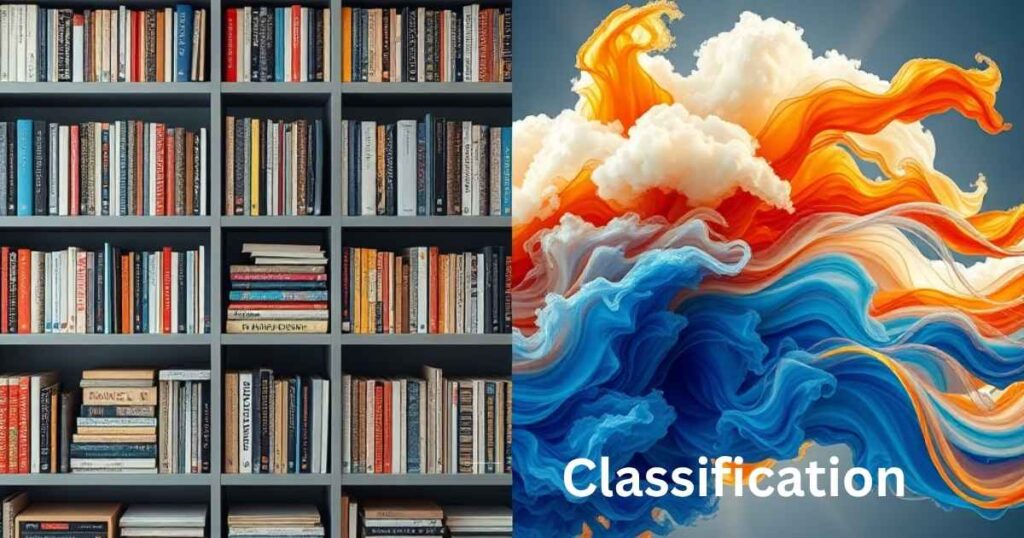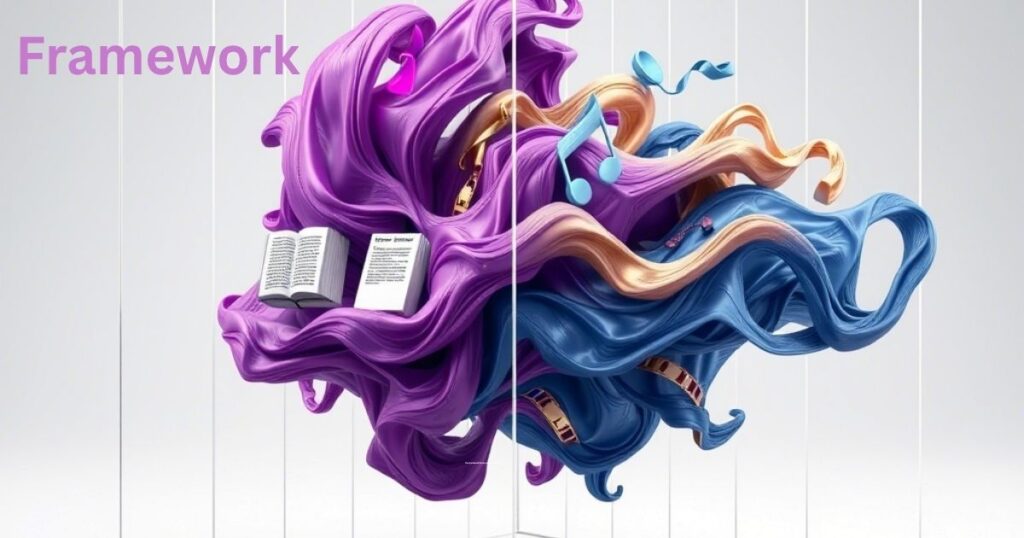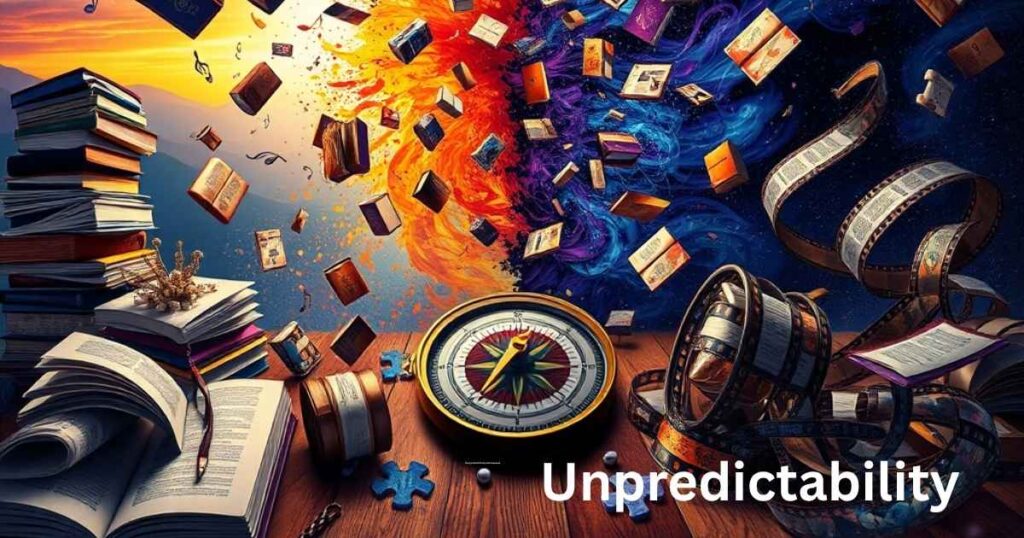In art and writing, the word genre helps people understand different types of work by putting them into categories. But sometimes, creative work doesn’t fit into any one box. That’s where the idea of Antonyms for Genre becomes important. These are words that mean the opposite of genre. They point to works that break rules, go beyond labels, and follow their own paths. Antonyms for Genre include ideas like chaos, individuality, nonconformity, and even disorder.
These words help us talk about work that doesn’t follow usual forms or structures. Many artists and writers use this freedom to create bold, original content. By looking at Antonyms for Genre, we can better understand how creativity works outside the lines. We learn how people express feelings, ideas, and stories in new and surprising ways. This is useful in today’s world, where more and more creators are moving away from traditional genres to try something new.
Main Points
When we say something is not in a genre, we mean it rejects a fixed category or typical type. These antonyms show how art can be wild, personal, or unusual. Some work may defy classification, while others skip structure or form.
By exploring these antonyms for genre, we learn how creativity can break free. Writers, musicians, and artists use tools like wild formats, non-linear storytelling, or mixed media. These choices spark engagement, surprise, or even shock.
1. Genre Opposites Allow Creative Freedom
When you move away from strict genres, you find more freedom to create. This opens new paths for stories, music, and art. You’re not stuck in one style. Artists can explore many ways to express ideas.
2. Chaos Breaks Genre Rules
Chaos in art means breaking the rules. Instead of following a plan, creators work with random ideas. It might look messy, but it has energy. This disorder gives a raw, real feeling.
3. Individuality Replaces Labels
Genres use labels to group art. But individuality means doing your own thing. Each artist brings their unique background, voice, and view. This makes the work hard to place in one box.
4. Atypical Art Stands Alone
Atypical creations don’t follow normal rules. They are not part of any category. These works stand out because they look, sound, or feel different.
5. Nonconformity Fuels Innovation
Nonconformity means not following what’s expected. Many great artists choose to ignore genre rules. They mix styles or invent new ones. This spirit leads to innovation and change.
Read this Also: 25 Spiritual Meanings of Hitting an Owl With Your Car
Category
A category sorts things into groups, like mystery or comedy. But when art refuses to fit into a category, it steps outside genre limits. These works have no label, no clear place. They feel daring and new, like fresh snow in an unknown land.
When you see a movie that blends drama, sci-fi, and documentary, you notice it escapes easy categorization. It lives in the space where boundaries blur. That lack of clear category becomes a strong antonym for genre. It tells us the artist values freedom over labels.
Type
We often hear words like “type” to describe art: horror, romance, thriller. But not all work fits one type. Some pieces mix styles or avoid labels entirely. That means they defy genre.
Imagine a poem that shifts from funny to sad to surreal without warning. It has no one type. That unpredictable feeling highlights how some works break the mold. This absence of type becomes a meaningful antonym for genre.
Classification

Classification helps organize libraries, music, and film. It sorts works by shared features. But some artists resist classification. They want to create without being labeled.
When art is hard to classify, it becomes exciting. You may not know what it is until you experience it. That defiance of classification becomes another antonym for genre. It shows how some creators value creativity over order.
Genre
We know genre gives structure, style, and expectation. We expect thrillers to have tension and sci-fi to show future worlds. But some artists reject these rules. They push against genre to find new expressions.
This rejection is one of the purest antonyms for genre. The word says, “I am not in your box.” It challenges how we label art. It forces us to see creativity as limitless.
Form
Form gives shape: chapters in a novel, three acts in a play, verse in a poem. But some works shatter that form. They choose free verse, stream-of-consciousness, or open-ended narratives.
When form disappears, it creates another antonym for genre. Without clear form, art feels fresh. It liberates the creative process and surprises the reader. That freedom deepens our sense of beauty and innovation.
Find more words!
Want to explore beyond these 12 antonyms for genre? Use tools like thesauruses. Try words like chaos, aesthetic delusion, or fluidity. Look for synonyms of nonconformity, disorder, or abstract.
You might play with digital formats or mixed mediums, joining poetry, visual, and sound. You could mix print with online, or prose with spoken word. These experiments reveal how art can escape genre’s grip. Keep exploring and find more ways art can surprise.
Style
Style reflects a person’s unique choices,tone, voice, visual look. When an artist mixes styles or avoids a stable identity, they step outside the genre. Their art becomes hard to pin down.
Artists who blend personal flair with new techniques invite us to see that style itself can be fluid. They redefine how we think about genre and show us that style need not confine expression.
Medium
A medium might be paint, film, words, music. But some art ignores mediums or blends many. Think of installations that use text, visuals, and sound together.
When medium blurs, it becomes an antonym for genre. That digital or mixed approach breaks from any single genre’s expectations. It highlights how the process and the message can become one.
Framework

A framework is the plan or outline for art,beginning, middle, end. But many works refuse frameworks. They unfold as stream-of-consciousness or pure emotion.
Without a framework, authors leave room for surprises. Music may flow without verse or chorus. That choice becomes a clear antonym for genre. It frees creators to explore beyond old rules.
Structure
Structure gives order to art,chapter headings or scene breaks. But disrupt that, and art becomes unpredictable.
Writers might skip structure entirely. Filmmakers could use disjointed timelines. That broken-up approach becomes another antonym for genre. It invites the audience to lean in and explore.
Design
Design guides how art looks or feels. Good design follows principles. But some artists reject that. They let shapes float or colors clash.
When design is messy or anti-aesthetic, the result can be powerful. It challenges norms and genres. That rejection of clean design becomes a bold antonym for genre.
Tradition
Tradition describes what we expect from classic art forms, like sonnets or folk songs. But some creators reject tradition. They forge new paths.
They may use old forms with new meaning or create an entirely new form. That break with tradition becomes a living antonym for genre. It shows how evolution drives creativity.
Format
Format means how art is shared: book, podcast, video, gallery. But some works mix formats or invent new ones.
You might see a story told partly in text and partly in augmented reality. That mixing breaks format rules and defies genre. It shows how boundaries between media can vanish, creating space for new ideas.
In exploring these 12 antonyms for genre, we see how art breaks out of boxes. These words,category, type, classification, form, style, medium, framework, structure, design, tradition, format, and genre itself,help us spot where art becomes free. When creators embrace nonconformity, fluidity, or disorder, they show us the power of stepping beyond familiar patterns. They invite us to rethink expectations. And that freedom makes creativity richer, deeper, and endlessly surprising.
Improvisation
Improvisation means creating without a plan. It happens in music, writing, or even painting. The artist goes with the flow. They make choices in the moment.
There is no fixed structure. There are no strict rules. This method creates real emotion. It feels honest and raw. That’s why improvisation is powerful in art.
Unpredictability
Unpredictability makes art exciting. You don’t know what comes next. The story may change suddenly. The tone may shift fast. This keeps the reader or viewer guessing.
It breaks the pattern of normal work. You don’t feel like you’ve seen it before. It makes each moment fresh. It gives a strong emotional effect. This is why people love unexpected art.
Innovation
Innovation in art often mixes old with new. An artist might use traditional tools with digital platforms. They might mix paint with code or blend music with storytelling. This creates fresh forms of expression.
Writers may try nonlinear structures. Designers might create pieces with no clear shape. These are all signs of innovation. It pushes art forward. It opens new ways to see the world.
Improvisation
In improvisation, artists don’t overthink. They follow their instincts. A musician might play a tune that just feels right. A writer might write a poem without editing. It all flows naturally.
There’s a strong connection between emotion and creativity here. The result may be rough, but it’s real. Many people like this honest feeling. It reflects true human experience.

Unpredictability can be a surprise twist in a story. Or it could be using strange colors in a painting. These surprises grab attention. They keep people interested.
This helps break the rules of regular art or writing. You don’t follow the same steps. You let the art take its own path. That’s what makes it exciting. That’s what keeps it alive.
FAQ’s
What’s the opposite of genre?
Antonyms for Genre include words like chaos, disorder, and nonconformity. These words show freedom, creativity, and a lack of clear structure in art.
What is the synonym of genre?
A synonym for genre could be category, type, or classification. But Antonyms for Genre explore the opposite, where boundaries and labels are removed.
Are form and genre synonyms?
Form and genre are closely related but not the same. When learning Antonyms for Genre, form focuses more on structure, not content grouping.
What is another name for the genre of writing?
You can say style, category, or type. But Antonyms for Genre refer to works that reject labels, offering unique and personal expression.
Why are Antonyms for Genre important?
Antonyms for Genre help people understand art that doesn’t follow rules. They open the door for fresh ideas, new voices, and creative freedom.
Conclusion
Understanding Antonyms for Genre helps us see art in new ways. They show how creativity can grow without limits. When we explore antonyms of genre, we learn about works that don’t fit into a box. These works are free, bold, and often very personal. You can find emotion, truth, and style that break old rules. Some artists use innovative antonyms to build fresh ideas and unique voices. Others use endeavor antonyms to express different kinds of effort in storytelling.
When we navigate antonyms, we find new tools to think and create. Whether in music, books, or art, moving beyond genre opens a big door. It gives us freedom to think outside the box. Even the antonym for landscape shows us how setting and structure can change in art. So, knowing Antonyms for Genre is more than a language tool,it’s a way to understand creativity with open eyes.

Gramcoachpro is your go-to platform for mastering grammar, writing, and communication skills. If you’re a student, teacher, or content creator, we provide easy-to-understand tips, examples, and tools to improve your language — fast and effectively. Our mission is to make better writing simple and accessible for everyone.

